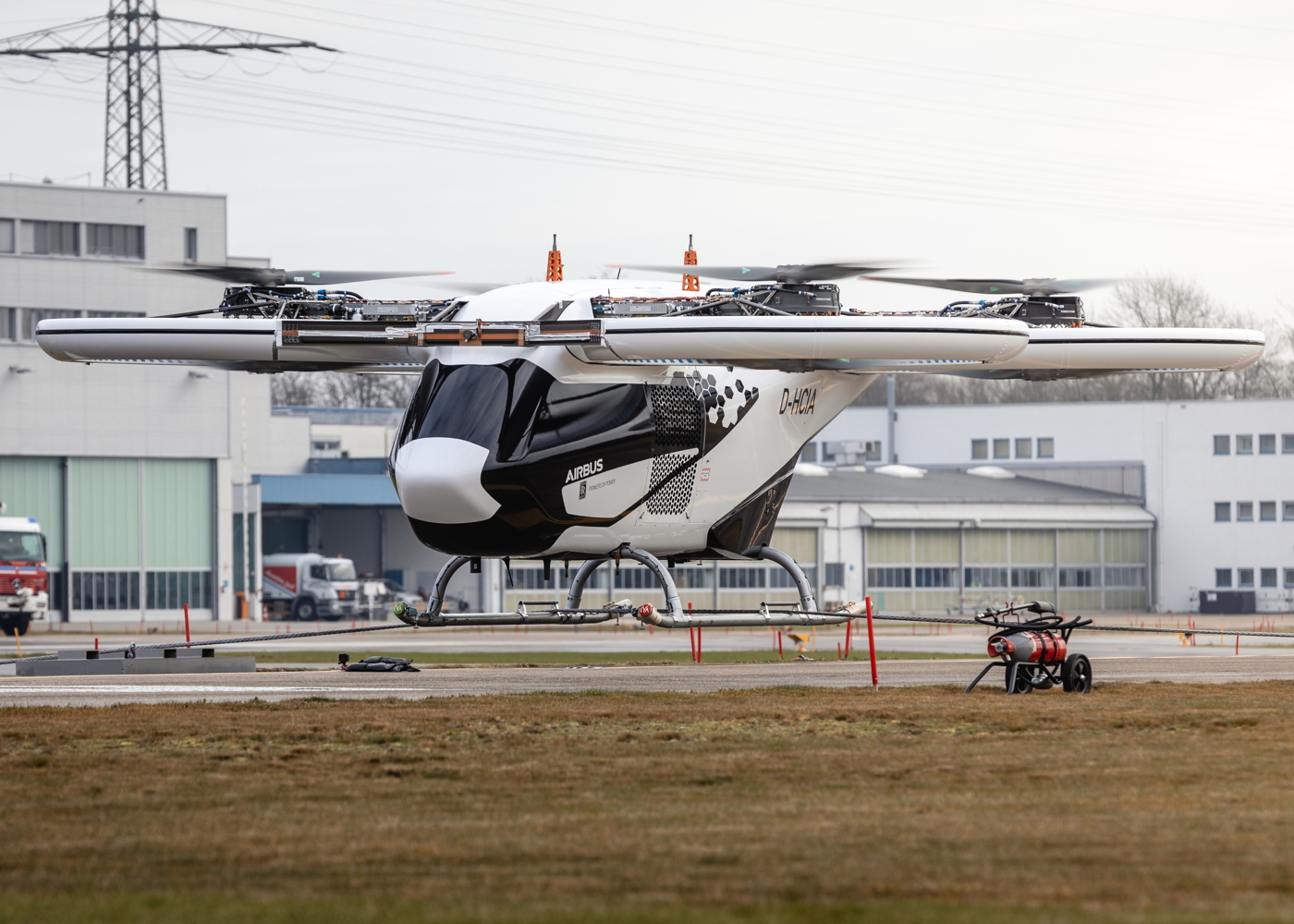Click Here to View This Page on Production Frontend
Click Here to Export Node Content
Click Here to View Printer-Friendly Version (Raw Backend)
Note: front-end display has links to styled print versions.
Content Node ID: 418962
Airbus continues to work on developing eVTOL aircraft technologies, the European aerospace group’s CEO, Guillaume Faury, confirmed on Tuesday, but the company doesn’t expect fully viable commercial urban air mobility (UAM) operations to get underway until the second half of this decade. He insisted that the group remains committed to electric aviation, despite a shift in emphasis during 2020 towards developing hydrogen propulsion for larger airliners that it expects to enter service around 2035.
Speaking during the latest in a series of online interviews staged by air traffic management agency Eurocontrol, Faury noted that Airbus has already flown two eVTOL technology demonstrators, the CityAirbus and the Vahana. He said that he sees a future for smaller eVTOL models, not only in their own right but also for their potential use as a platform to develop technologies for applications of electric propulsion on larger commercial airplanes.
“We continue to believe in this industry for the future,” said Faury. “It's probably a bit more further out than what most people think because there are…a lot of challenges.” By contrast with Airbus’s projected timeline for the start of UAM air taxi operations, several well-funded eVTOL startups are more bullishly proposing to launch services no later than 2024.
“These small vehicles are a fantastic platform for testing at a small scale electric technologies, electric propulsion,” he stated. “And then when we have something that works to be able to use it on, air taxis, but also to scale it up for commercial aviation. That's why we are a very serious player in this business, for its own merits, but also to serve other businesses, including helicopters, by the way.”
On the timeline for application in its own right, Faury conceded that a few years ago he estimated that 2025 would be a reasonable target, but the challenges associated with regulatory hurdles and public acceptance have changed his view to a degree. “We think there is still time to mature all of this, but this will come,” he explained. “Two, three years ago I said 2025. I say now the second half of the decade. So it just shows it takes more time to mature. There are many concepts, a lot of people are investing in that segment, and…it's a segment that is quite exciting for engineers and others.”
Nonetheless, Faury does think that plans for some small-scale demonstrations of eVTOL air taxi services in Paris during the 2024 Olympic Games will go ahead. Airbus is a partner in these plans, which also involve Aeroports de Paris and Air France, along with eVTOL aircraft developers Volocopter, Vertical Aerospace, Ascendance Flight Technologies, Pipistrel, and EHang. “It’s a very important milestone and we like to think a good milestone to make demonstrations,” he concluded.
Faury's comments were made a few days after a senior Airbus Helicopters executive expressed skepticism that eVTOL passenger aircraft would be put into commercial service anytime soon. Romain Trapp, president of Airbus Helicopters Inc.—the rotorcraft maker’s North American arm—told attendees at a Helicopter Association International (HAI) webinar in late March that “we as an industry we have to learn and hopefully we are going to find at some point, a game-changing technology—which I don’t see today, by the way.”
Trapp said that it could be “decades” before eVTOL aircraft were integrated into a UAM environment. “What we all want to see as an industry is some game-changing technology that will bring us one step further," he explained. "The technology is not there, yet. And the regulatory environment has not even been defined, and for good reasons. Because at the end of the day, we still have a long way to go to be able to do so. What we all want is to be able to do so in a safe manner, with the highest level of safety, because this is what our industry is all about. There is a huge gap between flying when there is nobody else around you and flying in an environment where there are other [people around you].”
When eVTOLs do make it to market, Trapp sees them as complementary to, as opposed to replacements for, traditional rotorcraft. “I don’t see when they come they will replace helicopters," he said. "All of [AAM] is complementary.” Trapp said it was unlikely eVTOLs could be substituted for conventional rotorcraft when it comes to certain types of operations, such as search and rescue. “When are we going to see a hoist operation with an eVTOL?” he asked rhetorically. “We still have a long way to go.”
